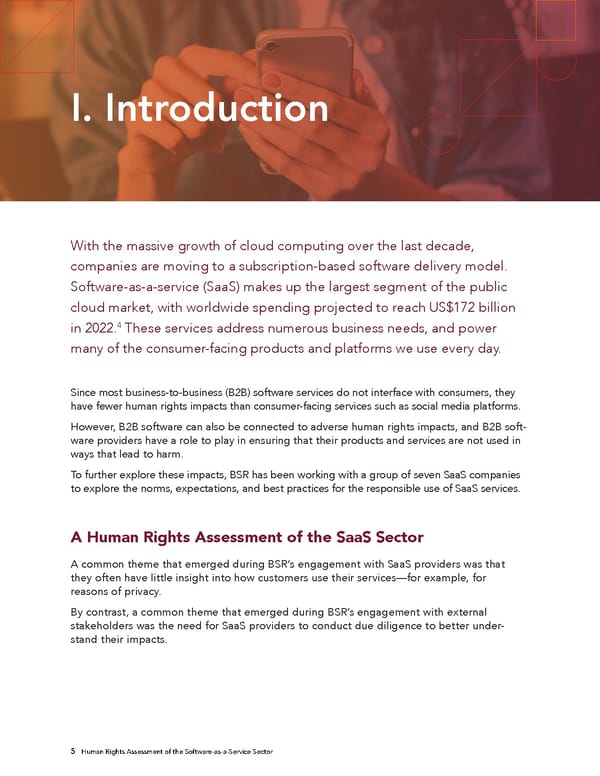I. Introduction With the massive growth of cloud computing over the last decade, companies are moving to a subscription-based software delivery model. Software-as-a-service (SaaS) makes up the largest segment of the public cloud market, with worldwide spending projected to reach US$172 billion 4 in 2022. These services address numerous business needs, and power many of the consumer-facing products and platforms we use every day. Since most business-to-business (B2B) software services do not interface with consumers, they have fewer human rights impacts than consumer-facing services such as social media platforms. However, B2B software can also be connected to adverse human rights impacts, and B2B soft- ware providers have a role to play in ensuring that their products and services are not used in ways that lead to harm. To further explore these impacts, BSR has been working with a group of seven SaaS companies to explore the norms, expectations, and best practices for the responsible use of SaaS services. A Human Rights Assessment of the SaaS Sector A common theme that emerged during BSR’s engagement with SaaS providers was that they often have little insight into how customers use their services—for example, for reasons of privacy. By contrast, a common theme that emerged during BSR’s engagement with external stakeholders was the need for SaaS providers to conduct due diligence to better under- stand their impacts. 5 Human Rights Assessment of the Software-as-a-Service Sector
 Human Rights Assessment of the Software-as-a-Service Sector Page 5 Page 7
Human Rights Assessment of the Software-as-a-Service Sector Page 5 Page 7